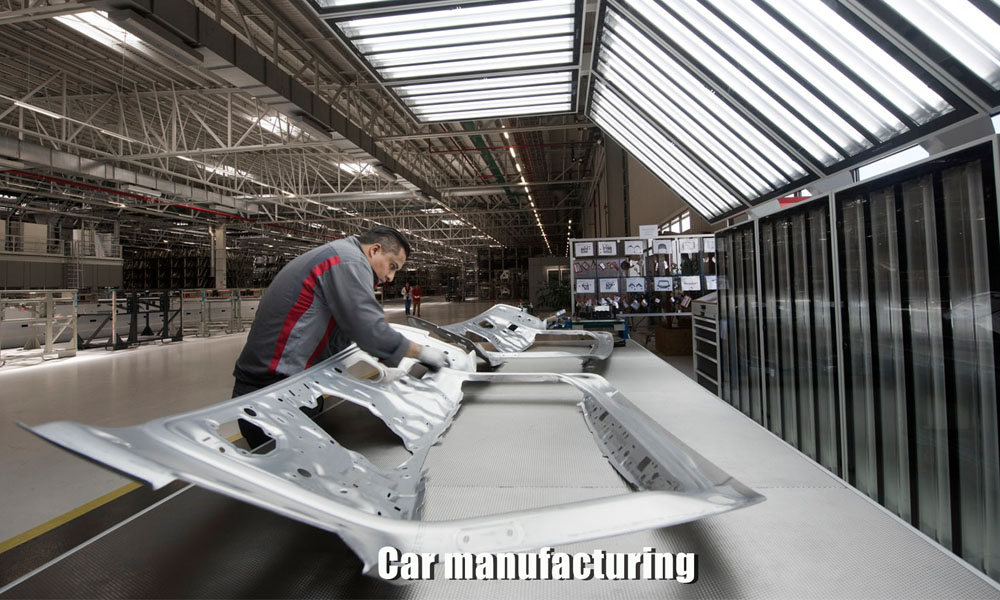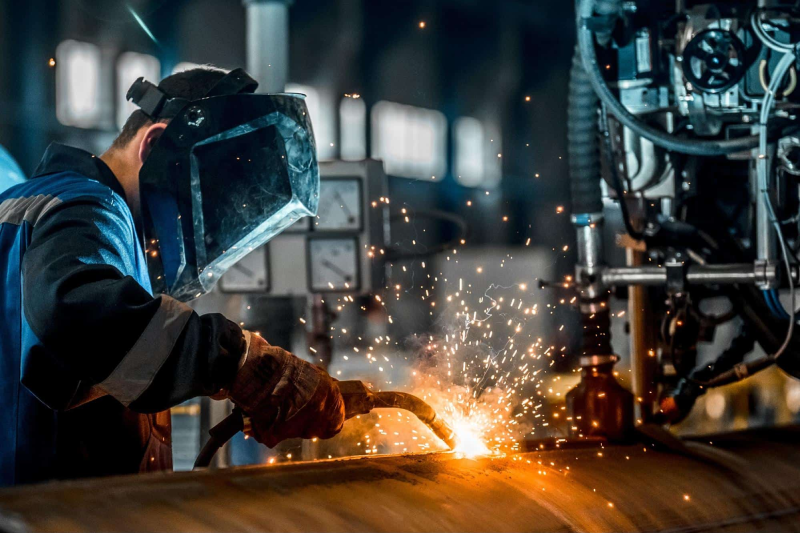All About Welding: Trick Insights Into Techniques and Finest Practices for Success
Welding includes a selection of techniques, each suited for certain materials and applications. Recognizing these approaches, such as GMAW, SMAW, and TIG, is important for accomplishing ideal outcomes. Moreover, the appropriate devices and security practices can not be forgotten. As preparation and troubleshooting play important roles in the welding process, grasping these aspects can considerably boost the quality of the end product. What are the crucial elements that ensure an effective weld?
Understanding Different Welding Techniques
Welding methods include a range of approaches, each matched to details applications and materials. Among the most usual techniques are Gas Metal Arc Welding (GMAW), Protected Steel Arc Welding (SMAW), and Tungsten Inert Gas Welding (TIG) GMAW, additionally referred to as MIG welding, is popular for its rate and adaptability, making it ideal for thin products. SMAW, or stick welding, is favored for its simpleness and effectiveness in outside atmospheres, especially with thicker steels. TIG welding supplies precision and control, making it appropriate for detailed job and non-ferrous steels (Belgrade Fabrication). Each strategy has its special advantages and factors to consider, enabling welders to choose the best method based upon the job's demands, material kind, and preferred end results. Understanding these methods is important for effective welding
Vital Welding Equipment and Devices
While numerous welding strategies require certain skills, the ideal tools and devices are equally necessary for accomplishing high quality outcomes. Vital welding devices includes welding equipments, which vary depending on the method-- such as MIG, TIG, or stick welding. Protective equipment, including gloves, headgears, and aprons, warranties safety and convenience throughout the process. In enhancement, components and clamps help secure materials in location, ensuring accuracy in welds. Consumables like welding poles, cord, and securing gas are likewise crucial parts that affect the top quality of the weld. Moreover, tools such as cutters and mills help with surface area preparation and post-weld ending up, adding to an expert end result. Buying top quality devices inevitably enhances the effectiveness and effectiveness of welding projects.
Safety And Security Practices in Welding
Correct safety and security techniques are crucial in the welding sector to protect workers from prospective hazards. Welders should wear suitable individual protective devices (PPE), including safety helmets with correct shading, gloves, and flame-resistant apparel. Sufficient air flow is essential to lower direct exposure to harmful fumes and gases produced during the welding procedure. In addition, employees need to be educated in the appropriate handling of welding equipment to stop crashes. Fire safety and security actions, such as keeping flammable products far from the welding location and having fire extinguishers readily offered, are essential. Routine inspections of tools and workspaces can help recognize prospective dangers before they lead to accidents. By sticking to these security practices, welders can create a more secure working setting and reduce dangers connected with their profession.
Preparing Materials for Welding
Preparing products for welding is an essential step that considerably influences the top quality and stability of the final product (Welding). Correct prep work entails cleaning the surfaces to eliminate contaminants such as oil, rust, and dust, which can compromise the weld. Strategies such as grinding, sanding, or utilizing solvents are frequently used to accomplish a tidy surface. Furthermore, guaranteeing that the products mesh snugly is essential; voids can result in weak welds. It's also vital to take right into account the alignment and positioning of the parts, as this will certainly affect the simplicity of welding and the last result. Choosing the ideal filler material and making certain compatibility with the base metals is crucial for achieving strong, long lasting welds.
Tips for Getting High-Quality Welds
Accomplishing top notch welds calls for interest to information and adherence to best methods throughout the welding procedure. Appropriate joint preparation is necessary, ensuring surface areas are cost-free and clean from contaminants. Choosing the appropriate filler product and welding method based upon the base metals is crucial for perfect bonding. Maintaining constant traveling speed and angle while welding can avoid flaws and promote uniformity. Additionally, regulating heat input is crucial; extreme warm can result in bending and deteriorated joints. If essential, frequently inspecting the welds throughout the procedure enables for instant adjustments. Employing proper post-weld therapies, such as cleaning and stress and anxiety relief, can enhance the sturdiness and honesty of the weld, inevitably making certain a successful result.
Repairing Typical Welding Issues
Welding often provides difficulties that can influence the high quality and honesty of the end product. Common problems such as porosity, inconsistent weld grains, and overheating can develop, each requiring details repairing strategies. Comprehending these issues is important for welders to improve their skills and attain excellent outcomes.
Porosity Issues Explained
Although porosity can typically be forgotten, it remains an important problem in welding that can jeopardize the stability of an ended up item. Porosity describes the visibility of tiny gas pockets within the weld grain, which can lead and damage the joint to early failing. This issue commonly develops from impurities, wetness, or incorrect shielding gas coverage throughout the welding process. To mitigate porosity, welders need to validate that the website base materials are completely dry and tidy, make use of suitable shielding gases, and maintain constant welding parameters. Frequently examining the tools and setting can additionally assist identify possible concerns before they show up in the weld. Attending to porosity properly is important for attaining solid, long lasting welds that satisfy high quality requirements.

Inconsistent Weld Beads
Irregular weld grains can greatly affect the quality and strength of a completed item. Various factors contribute to this problem, consisting of inappropriate traveling speed, incorrect amperage setups, and inconsistent electrode angles. When the welder moves as well promptly, a grain may appear slim and lack penetration, while moving also slowly can cause excessive build-up. In addition, making use of the incorrect amperage can lead to either damaging or too much spatter, both of which concession weld honesty. The welder's strategy, such as inconsistent torch activity, can likewise result in uneven grain look. To alleviate these troubles, welders should concentrate on maintaining steady, controlled motions and making sure proper devices setups to attain harmony in their welds. Uniformity is vital to achieving trustworthy and strong welds.
Overheating and Bending Issues
Extreme heat during the welding procedure can result in substantial overheating and contorting problems, affecting the structural honesty of the work surface. These troubles frequently show up as distortion, which can compromise alignment and fit-up, making more assembly challenging. Elements adding to overheating consist of the choice of welding specifications, such as voltage and travel rate, as well as the type of product being welded. To alleviate these problems, welders should preserve regular travel speed and ideal heat input while checking the workpiece temperature. Additionally, pre-heating or post-weld heat treatment can assist alleviate stresses triggered by quick cooling - Belgrade Welding. Regular evaluation and adherence to best practices are vital in protecting against getting too hot and making certain the long life and integrity of bonded structures
Often Asked Questions
What Are the Job Opportunities in the Welding Industry?
The welding sector offers diverse occupation possibilities, including placements as welders, designers, instructors, and examiners. Professionals can operate in production, building, aerospace, and vehicle fields, gaining from strong need and competitive salaries in numerous duties.
Just How Can I Improve My Welding Speed Without Sacrificing Top Quality?
To boost welding speed without sacrificing top quality, one must exercise efficient strategies, preserve tools, optimize settings, and boost hand-eye sychronisation. Normal training and seeking comments can likewise considerably add to accomplishing quicker, top notch welds.
What Accreditations Are Readily Available for Welders?
Countless accreditations exist for welders, including those from the American Welding Society (AWS), the National Facility for Construction Education and Research (NCCER), and various industry-specific organizations. These credentials boost employability and show skill proficiency.
Just How Does Welding Affect the Properties of Metals?
Welding affects the buildings of steels by modifying their microstructure, which can lead to modifications in stamina, ductility, and firmness. Warmth input and cooling rates throughout the procedure significantly impact these material qualities.
Can I Bonded Dissimilar Metals Together?
